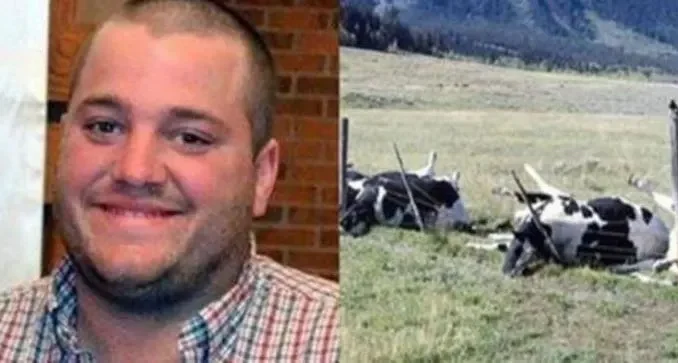A tragic incident on a Wisconsin farm led to the heartbreaking loss of 29-year-old farmer Michael Biadasz and 16 cattle. The accident was caused by gas poisoning, a silent but deadly hazard that can strike unexpectedly.
Michael had been working on his family farm, performing routine tasks he had done many times before. However, this particular day took a devastating turn due to an unforeseen and deadly combination of weather conditions.
Authorities later determined that an unusual atmospheric event created what experts described as a “deadly dome of air.” This phenomenon trapped toxic gases inside a manure holding tank, creating a lethal environment.
Manure storage facilities naturally produce hazardous gases, including hydrogen sulfide and methane, which can be extremely dangerous in high concentrations. In most cases, these gases disperse safely into the air, but that morning, the conditions were different.
Michael’s father, Bob Biadasz, emphasized that they had safely emptied the manure tank numerous times in the past. However, the rare weather pattern that day prevented the gases from escaping, turning a routine farm task into a fatal disaster.
The loss of Michael sent shockwaves through the local farming community. Friends, family, and neighbors came together to support the Biadasz family, grieving the untimely death of a hardworking young farmer.
To honor Michael’s memory, his family organized a tribute that spoke to his passion for farming. They lined up tractors and heavy machinery along the farm road, a powerful symbol of his dedication to agriculture.
The tragedy has sparked urgent discussions on farm safety, particularly regarding manure storage systems. Experts stress the importance of recognizing potential risks and implementing better protective measures to prevent similar incidents in the future.
The National Agriculture Safety Database has long warned about the dangers of manure storage facilities. Their guidelines emphasize the necessity of proper ventilation, gas monitoring systems, and clear warning signs to protect both workers and animals.
Farming is one of the most physically demanding and high-risk professions. Despite technological advancements, farmers still face life-threatening hazards daily, reinforcing the need for stricter safety regulations.
Michael’s death serves as a painful reminder of the risks that come with working in agriculture. His family hopes that increased awareness and better safety practices will prevent other families from enduring such a devastating loss.
While nothing can bring Michael back, his story may inspire change. By prioritizing safety, improving regulations, and educating farmers on hidden dangers, his tragic passing could ultimately help save lives.
